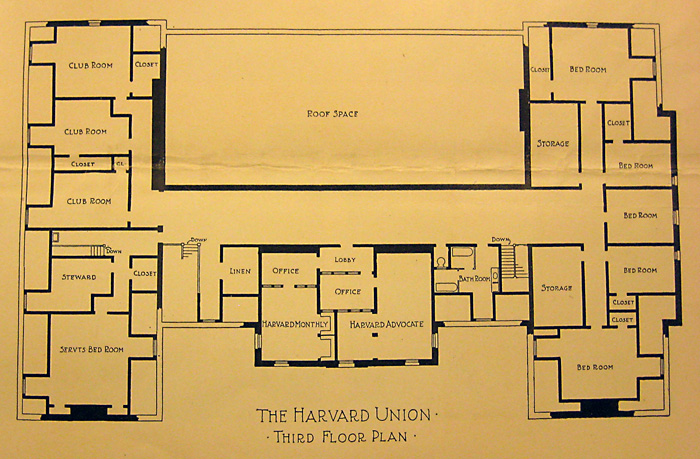Many of you asked to see a bit more of the Union as FDR knew it, so here are some additional shots I was able to dig up in the Harvard Archives.
First, the basement plan I showed you before, though this time with the complete rotunda area. FDR would have been quite familiar with this space, as not only were his Crimson offices next door, but the rotunda housed the ticket office for the Athletics office, the starting point for those all important football games.
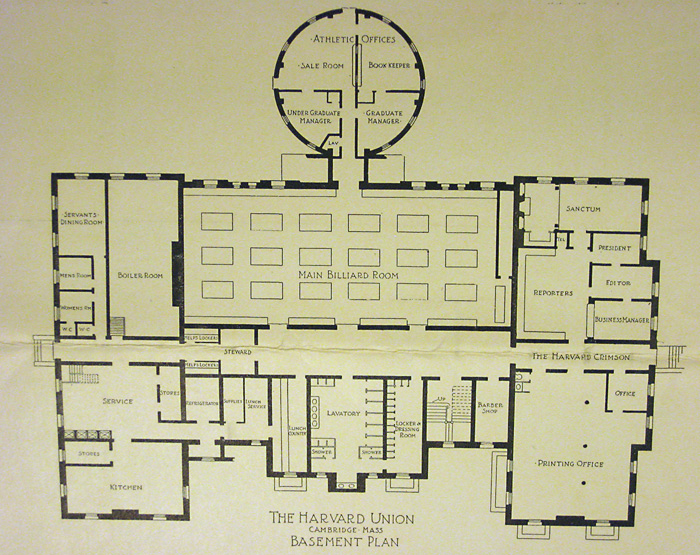
Below, the first floor plan. Several interesting things here. Notice first of all, the separate entrance for ladies. (This by the way, has presented me with a bit of an historical puzzle, because if you go look at the old Union, it appears as if the door was on the other side. Of course I could be looking at it wrong. The facade has been altered several times.)
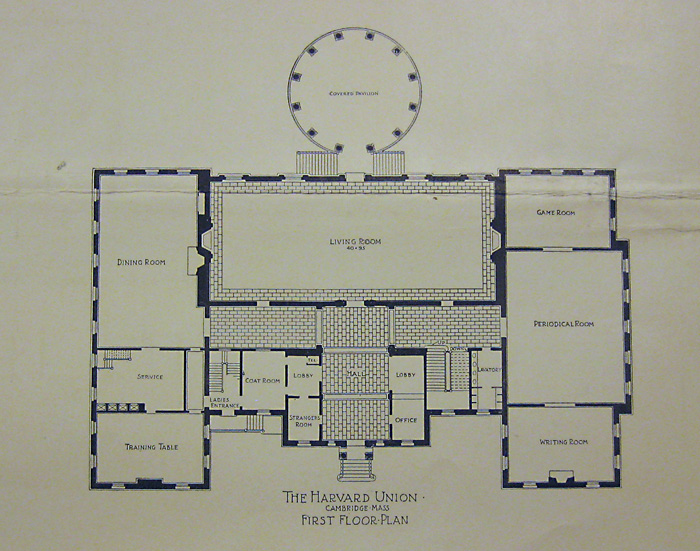
Where many of us will remember the kitchens and serving area, originally there was a restaurant dining room open to guests and alums, as well as an “athlete’s training table” where specially tailored meals were served for those in the rigor of sport pursuits. (What precisely they ate, given the nutritional mores of the time, I can but imagine: steak and eggs with cod liver oil?) Below, the dining room. The brochure advertising the Union (from which these pictures come) promises “excellent restaurant style fare and service” something “not always easily found in Cambridge.”
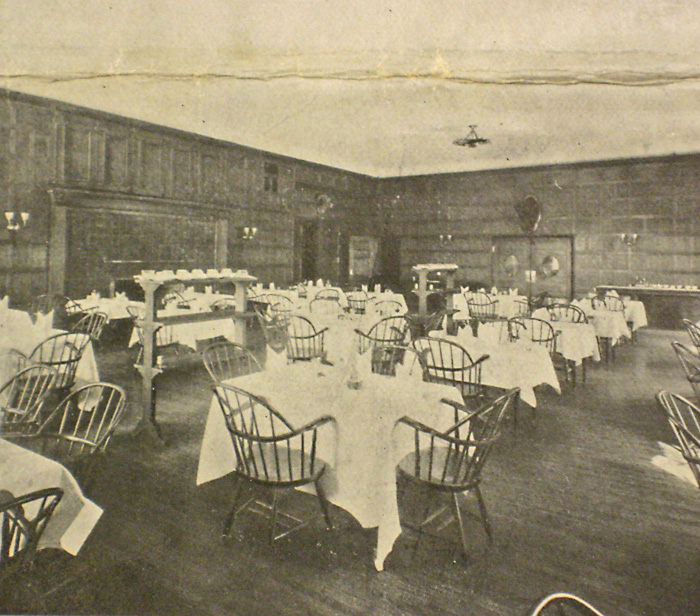
Next, a view of the “living room” (McKim’s own term, and an interesting early usage) looking east. The dining room above is on the other side of the wall behind the fireplace at far end. In my day, a large door had been cut through linking the two rooms. Notice the TR chandeliers, as well as the elaborately molded ceiling. I’m trying to remember back, and I seem to recall that the medallions featured a design of interlocked “H’s” and “U’s” This ceiling was completely destroyed when the room was carved up in the late 1990’s – a tremendous architectural loss.
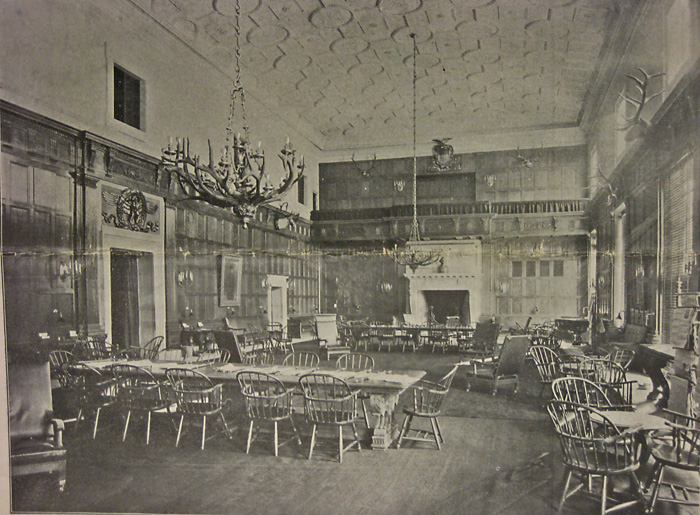
The second floor featured several interesting features: a ladies dining room, another billiard room, and the library and smoking room.
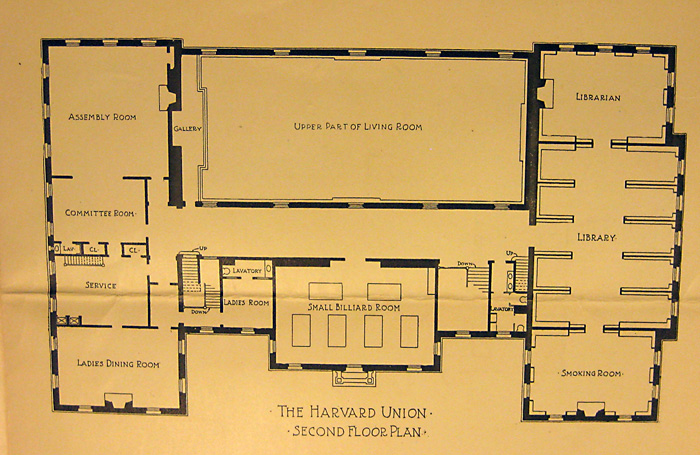
Here’s the library, brand new and only half filled with books, just as FDR would have known it. (He served on the library committee and bought books for the collection.) Notice the statues of Victorian worthies, just visible on the top of each shelf. Later views show that this room had become almost a reliquary of white marble sculpture. It was from here, incidentally, just a few years later, that T.S. Eliot borrowed a volume, Arthur Symons’s, The Symbolist Movement in Literature, which shaped his entire literary career.
 The top floor featured guest rooms for visitors (sans private bath, as was the custom of the day) plus the relatively modest homes of the Harvard Monthly and Harvard Advocate.
The top floor featured guest rooms for visitors (sans private bath, as was the custom of the day) plus the relatively modest homes of the Harvard Monthly and Harvard Advocate.
